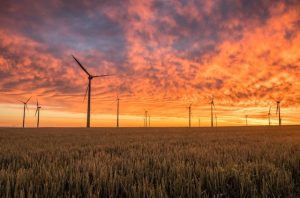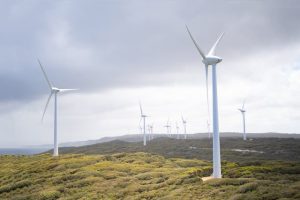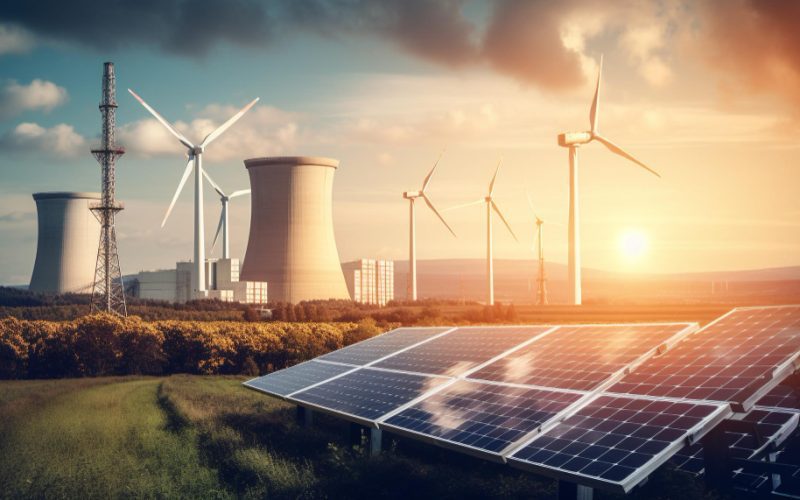The future of renewable energy isn’t just about making wind turbines and solar panels bigger and more efficient. Researchers and companies are tirelessly innovating to find new, more effective ways to harness clean energy. Given that land space is at a premium—with prime areas often overlapping with agricultural needs or challenging terrains—and the significant costs and logistical hurdles of offshore wind farms, the quest for new solutions is more critical than ever.
Innovations are flourishing in alternative forms of wind power, including bladeless wind turbines and airborne wind devices. Moreover, integrating renewable technologies like hydropower with solar energy through floating solar farms is gaining traction. Alongside these advancements in capturing renewable energy, exciting research is underway in energy storage technologies, such as lithium glass batteries, which could address the intermittent nature of renewable energy and drive the industry forward.
Reducing energy waste and lowering emissions are also critical components of a holistic approach to renewable energy. Interestingly, the shipping industry is revisiting ancient technologies, such as sails, to find modern solutions. This article delves into some of the most thrilling Renewable Energy Innovations reshaping the future.
Bladeless Wind Turbines – Safer, Smaller, More Convenient

While photovoltaics continue to thrive as the fastest-growing renewable energy source, onshore and offshore wind technologies remain crucial elements of the renewable energy mix. Current advancements focus on developing taller wind turbines, especially offshore, with longer blades that can capture more energy. Predictions suggest that blade length could reach up to 250 meters by 2035.
Beyond the incremental improvements in blade turbines, researchers are exploring novel methods to capture wind energy. Among these, bladeless wind turbines hold particular promise. Bladeless technology addresses several critical challenges associated with traditional wind turbines. These turbines are quieter, occupy less space, and pose significantly fewer threats to wildlife, especially birds. Although current bladeless technology generates about 30% of the energy produced by conventional turbines, it remains promising for applications where traditional turbines are impractical or challenging to install.
Madrid-based Vortex Bladeless, for example, is developing a single-tower bladeless turbine that uses vortex shedding (aeroelastic resonance). Other bladeless technologies employ magnets and aerodynamic induction. While this technology is still in its infancy and unlikely to surpass conventional blade turbines soon, it represents a quieter, safer alternative within a broader renewable energy strategy.
Researchers are also examining ion wind generator concepts, which use wind to create a flow of charged particles in the air to generate electricity. Innovations like the Electrostatic Wind Energy Converter (EWICON) and Solar State Wind Energy Transformer (SWET) have demonstrated the feasibility of harnessing wind energy through charged particles, albeit at small scales. These developments underscore the potential for diverse approaches to wind energy beyond traditional turbine designs.
Floatvoltaics – Saving Agricultural Land Space with Floating Solar Panels
Solar farms face a significant challenge: competition for land. In many countries, agricultural land use takes precedence, making large-scale solar farm installations difficult. Additionally, in areas where land is expensive and highly regulated, integrating solar technology necessitates innovative solutions.
Entering the scene are floating solar photovoltaic plants (FSPVs), also known as Floatvoltaics. These involve installing solar panels on floating platforms in bodies of water like lakes and reservoirs. The first significant floating solar installation occurred in Aichi, Japan, and the largest floating solar plants now operate in China, with substantial investments also happening in India, Taiwan, Japan, Indonesia, and the United States.
Floatvoltaics free up valuable land for agriculture and other uses. Additionally, water’s cooling effect makes floating panels more efficient than their land-based counterparts. When combined with hydroelectric solutions, Floatvoltaics can prevent water evaporation in reservoirs, enhancing dam efficiency in drought-prone regions.
Despite their advantages, Floatvoltaics come with challenges. They are more costly to install and maintain, requiring additional components for buoyancy and electrical safety. Components can degrade quickly in salt water environments, and maintenance tasks are more complex when performed on water. Moreover, reduced sunlight penetration can adversely affect aquatic ecosystems, a concern for conservationists.
Nevertheless, Floatvoltaics show excellent promise for industrial and commercial applications, especially in areas with abundant water bodies or as supplementary generation tools in hydro energy projects.
BAR Sails – Ancient Technology, Modern Solutions
Sailing ships trace back to ancient Egypt around 4000 BC, long before iron-clad ocean liners and fossil fuel propulsion systems emerged in the mid-1800s. With a renewed global focus on reducing emissions from international shipping, this ancient technology offers modern solutions for lowering fuel use and reducing carbon footprints.
Shipping giant Cargill has retrofitted their cargo ship, Pyxis Ocean, with experimental sails developed by UK-based BAR Technologies. These 37.5-meter high “wings,” made from wind turbine materials, fold down in port and raise in optimal wind conditions to save fuel. The ship’s test voyage from China to Brazil in September 2024 projected a fuel saving of approximately 1.5 tonnes per day, equating to about 20 tonnes of CO2 per day.
Decarbonizing the shipping industry presents significant challenges. Retrofitting existing vessels is costly, while newly built ships, though more efficient, still carry a high carbon footprint. While the research into electric and hydrogen-powered ships continues, these options are currently more viable for smaller ships, not large container vessels. In contrast, returning partially to wind propulsion offers an immediate way to reduce emissions without overhauling existing fuel infrastructure.
Airborne Wind Energy – Cost-Effective Flying Turbines

Traditional wind turbine technology faces scalability challenges, as wind strength typically increases with altitude, necessitating taller turbines. An innovative solution lies in airborne wind energy (AWE) systems. AWE devices are tethered to the ground and ascend to higher altitudes to capture stronger winds, generating electricity more efficiently.
Research into AWE includes three main concepts:
- Groundgen: A flying device tethered to a ground-based generator creates energy through the pulling force exerted by the aircraft in motion.
- Fly-gen: The flying device itself generates power using onboard rotors, transmitting the electricity through the tether akin to a flying wind turbine.
- Rotary: An airborne device supports a network of aerofoils that rotate in the air, driving a ground-based generator.
AWE systems offer several advantages over traditional turbines. They are smaller, use fewer materials, and are cheaper to produce and maintain. They are also more adaptable, capable of reaching higher altitudes to harness stronger winds.
Challenges remain, particularly in safety, especially during takeoff, landing, and potential crashes if the tether breaks. Ensuring safety in populated areas is a critical concern, yet ongoing research and climate action pressures are driving innovative solutions. Companies like Kitemill, Twingtec, Skysails, and Kitenrg are leading the development and improvement of AWE technology, demonstrating its feasibility and potential.
Lithium-Glass Batteries – The Next Generation of High-Capacity Batteries
Energy storage remains one of the biggest decarbonization challenges, crucial for intermittent renewable energy storage and EV adoption. Current lithium-ion batteries have significant drawbacks, including their flammable liquid electrolyte and reliance on unsustainable materials such as cobalt, which is in limited supply.
In response, the late scientist John Goodenough, a Nobel Laureate for his work on lithium-ion batteries, helped discover solid-state lithium-glass batteries. This innovation uses glass mixed with alkali metals to create a safer, more efficient battery. Lithium-glass batteries promise three times the storage capacity of lithium-ion batteries, faster charging, and significantly more charge-discharge cycles (up to 12,000).
Lithium-glass batteries also eliminate the risk of fire associated with liquid electrolytes, making them much safer. These next-generation batteries could revolutionize energy storage for EVs, renewable energy farms, and beyond, ultimately replacing lithium-ion batteries entirely.
Goodenough’s team continues to advance this promising technology, with hopes for scalable applications as early as 2024. These batteries could make EVs safer and lighter, increase their range, and drastically reduce recharge times. They also hold the potential to enhance solar and wind energy storage capacities, fostering greater renewable energy adoption.
Conclusion – The Future of Renewable Energy Innovations
Renewable Energy Innovations are crucial for achieving global decarbonization and reducing reliance on fossil fuels. Solar, wind, hydro, and geothermal energy are projected to be key contributors by 2050, with substantial investments in solar and wind technologies. While existing technologies continue to improve, new innovations will expand the renewable energy landscape, offering diverse options for clean energy generation.
As the renewable energy sector grows, there is a critical need for expertise and workforce solutions. Our company has been a leader in renewable energy for over 20 years, partnering globally with clients to provide expert talent acquisition, project management, and sustainable solutions for major solar and wind projects. Our deep knowledge of renewable energy forecasts and a vast network of skilled professionals position us to support the rapidly expanding sector.
If you are an innovator in the renewable energy industry, contact us to discuss your recruitment needs and explore collaborative opportunities to drive success in your projects. Let’s work together to shape a cleaner, more sustainable future with cutting-edge Renewable Energy Innovations.












